Eleanor Chodroff
University of York | Department of Language and Linguistic Science
firstname dot lastname at york dot ac dot uk
My primary research interest is in understanding the implications of phonetic variation for the phonetics–phonology interface and perceptual adaptation. I am particularly interested in cases of structured variation in phonetic realization. Structured variation in this case can be defined as systematic relationships of phonetic properties within and among speech sounds, and can often be revealed by phonetic covariation across talkers and/or languages. You can see some examples of structured variation from my own research on the data visualization page and just below.
These figures contain data from 180 speakers of American English: each point is a pair of speaker-specific mean voice onset time (VOT) values in milliseconds for the aspirated stop consonants in word-initial, prevocalic position. The histograms reflect the range of variation in speaker mean VOTs for each stop consonant category. As you can see, talker mean VOT is highly correlated among the aspirated stop consonants. You can find more information in the reference just below. We also looked at cross-linguistic covariation of VOT in Chodroff, Golden, & Wilson (2019), published in JASA-EL.
Talker mean voice onset time (ms) in American English

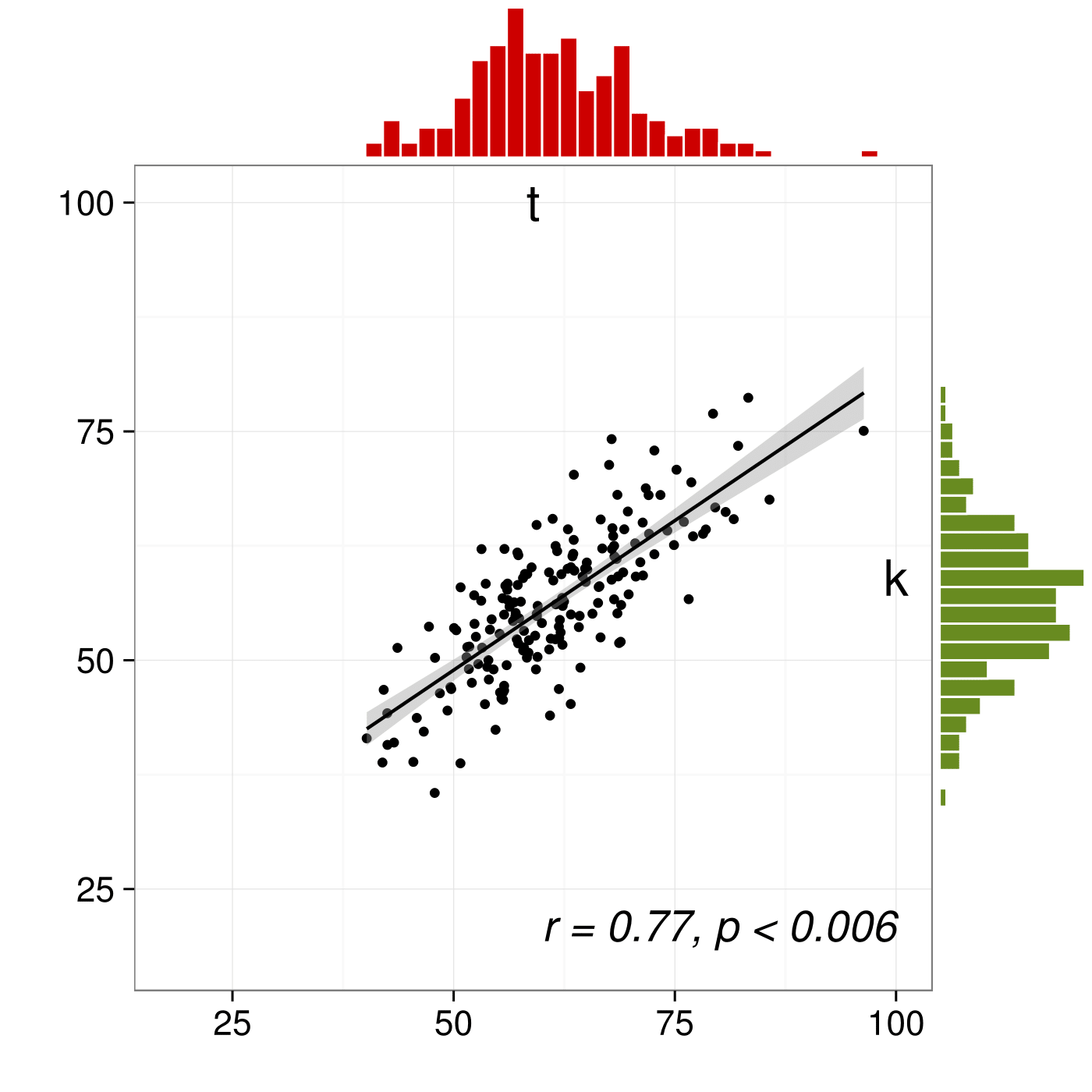
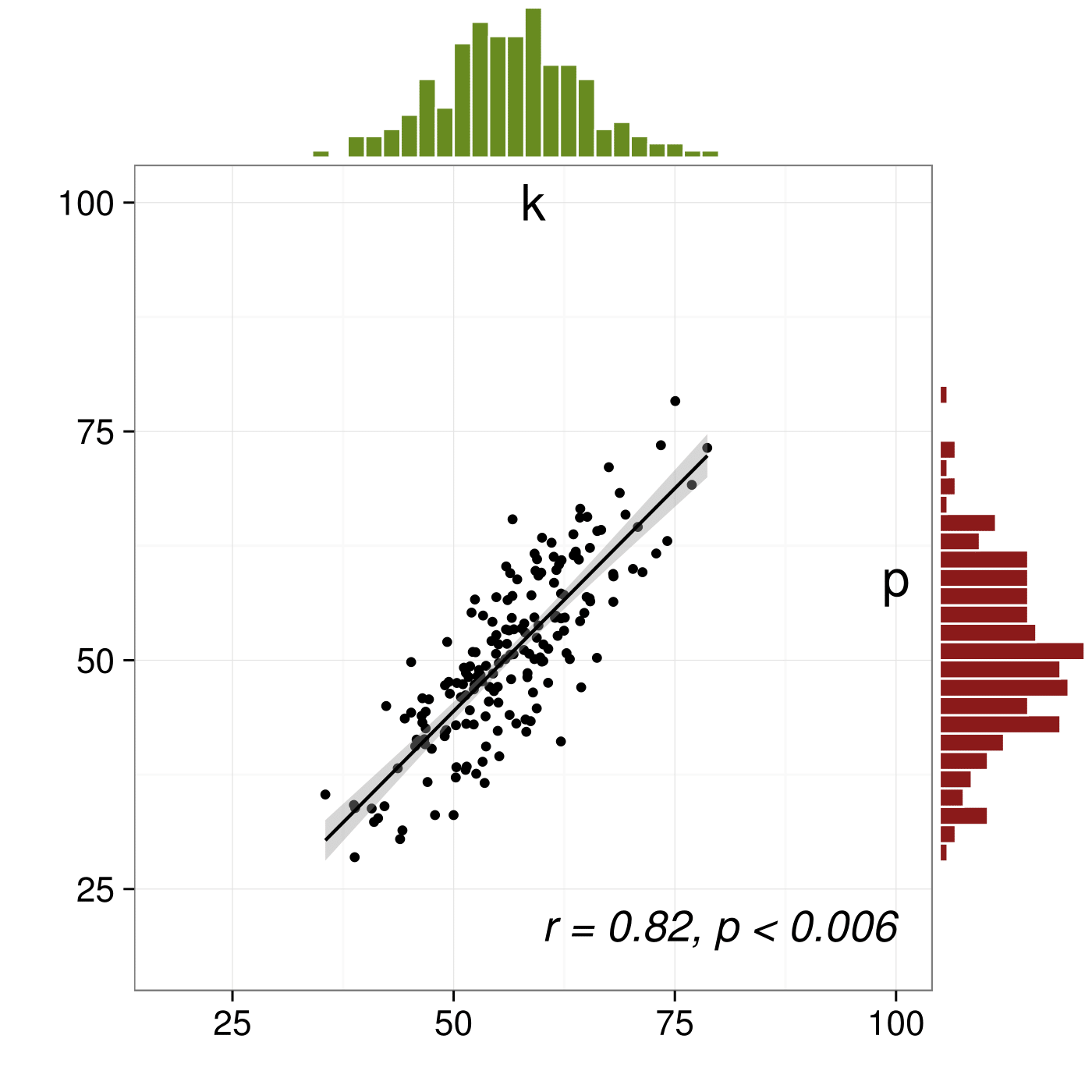



Chodroff & Wilson (2017), Journal of Phonetics
These figures contain data from 60 speakers of Czech: each point is a pair of speaker-specific mean mid-frequency peak values in Hertz for the sibilant fricatives. The histograms reflect the range of variation in speaker mean peaks for each sibilant. As before, speaker mean mid-frequency peak is also highly correlated among the homorganic sibilant categories (or sibilants with the same place of articulation feature). More information can be found in my dissertation! Examples from American English are also in the dissertation, and the manuscript is in prep -- check back soon for more!
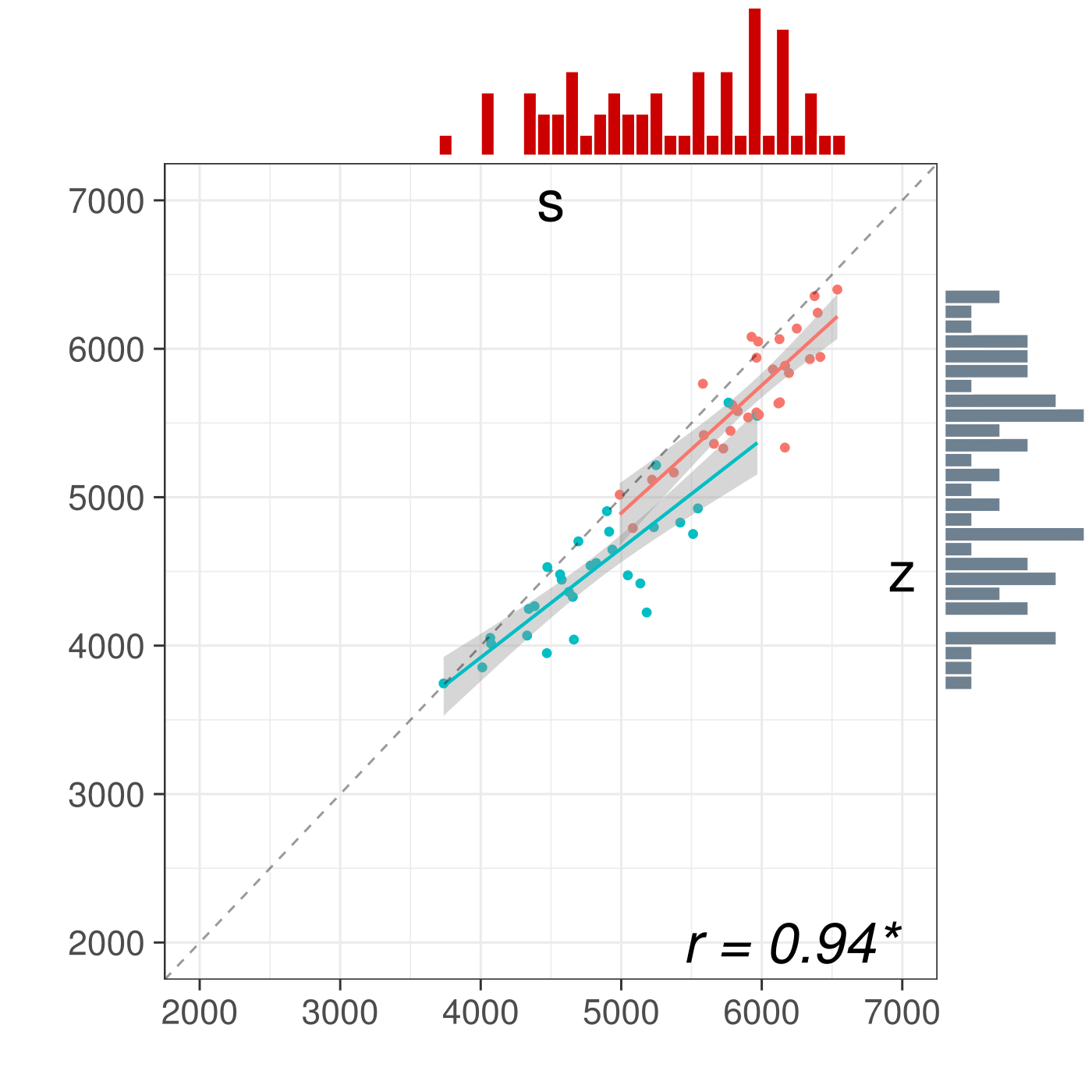
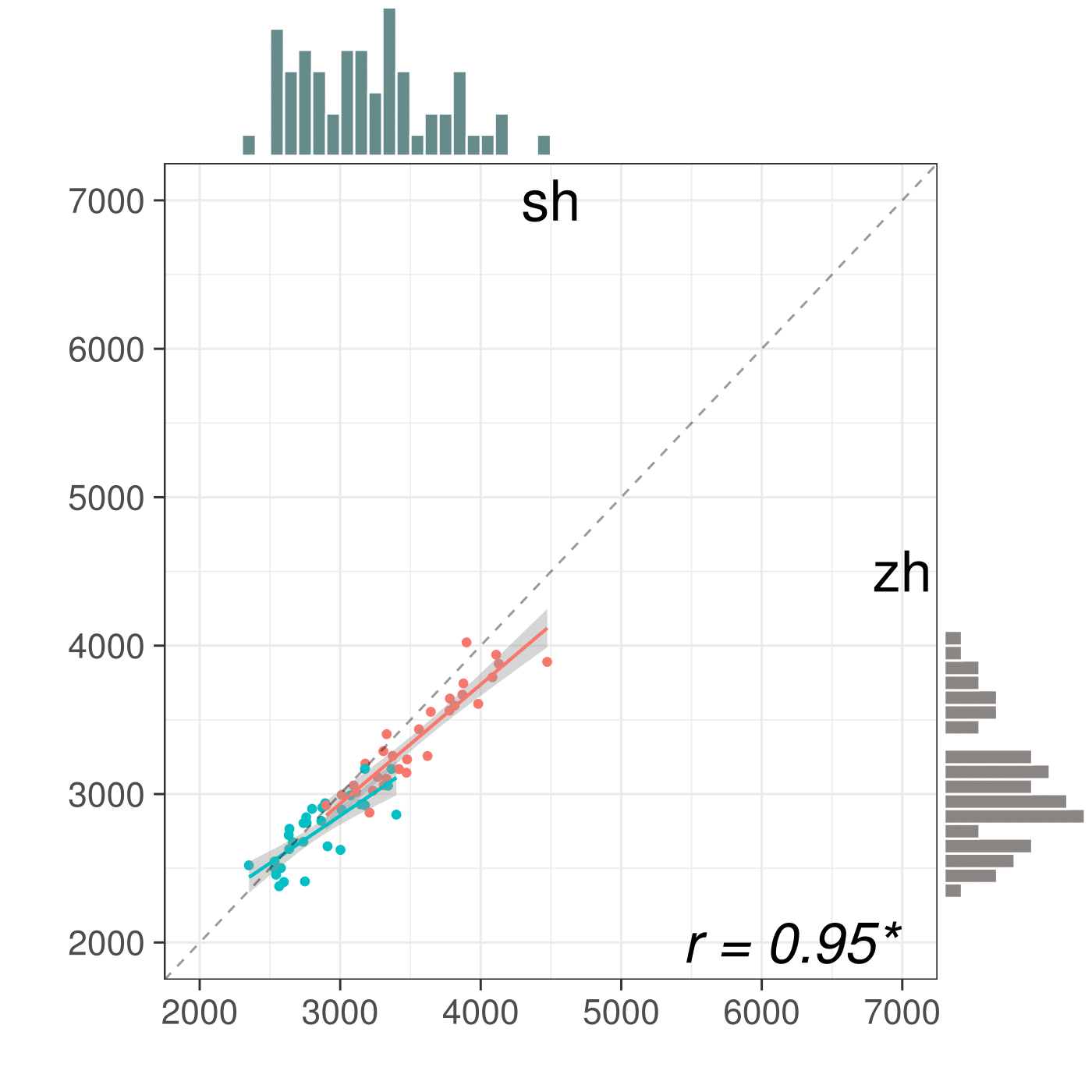
Chodroff (2017), dissertation
Any structure observed in the phonetic output is strongly indicative of structure in the underlying input. One principle I have been exploring to account for this preservation of structure is that of uniformity. Uniformity specifically requires that the mapping from phonological primitives (e.g., distinctive features or gestures) to corresponding phonetic target(s) be uniform for all segments/speech units that share that primitive (or feature/gesture). You can read more about uniformity here, along with information about the related special session on 'Articulatory and Acoustic Uniformity in Phonetic Structure' that Matthew Faytak and I are hosting at ICPhS 2019.
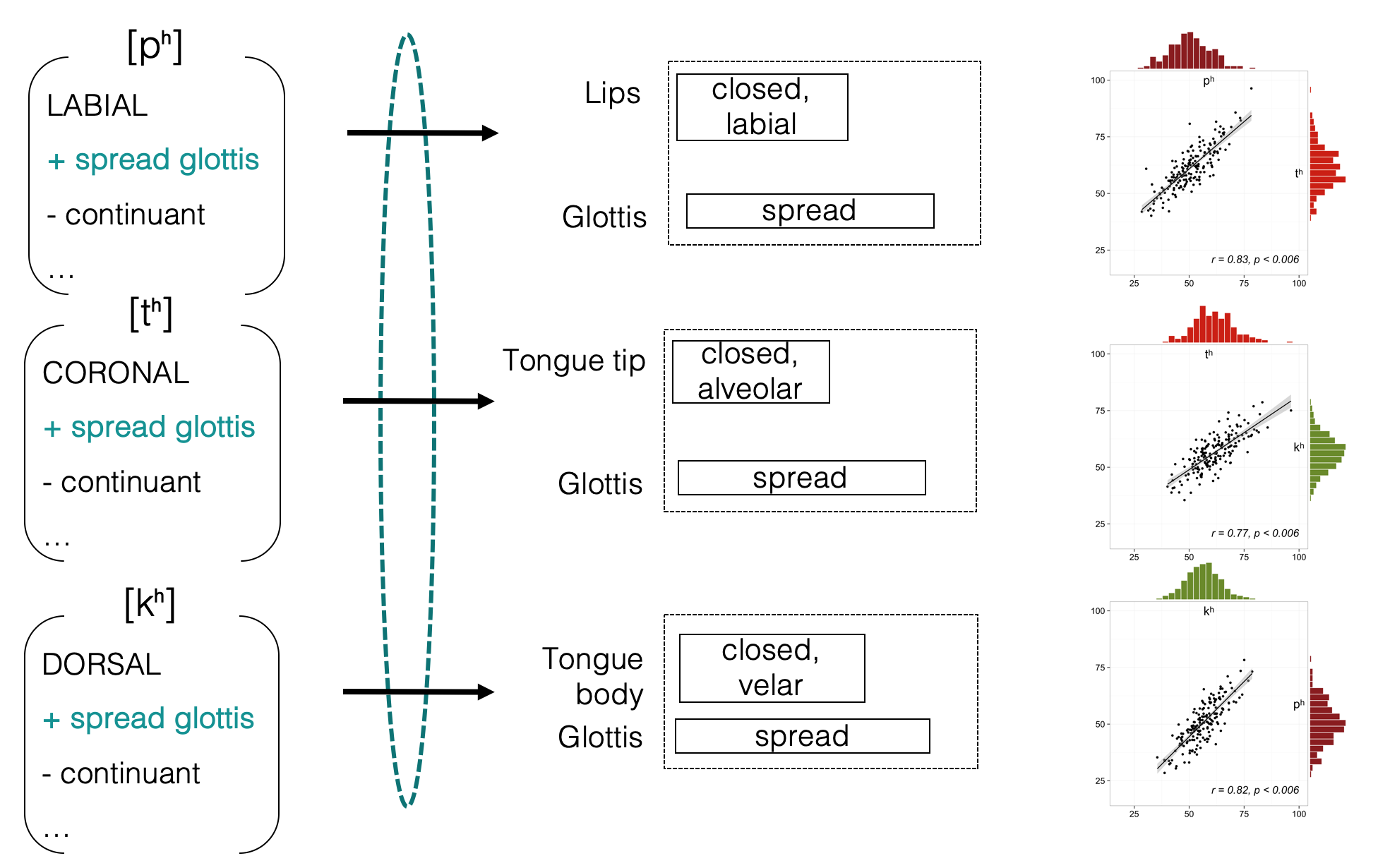
Structured variation in phonetic realization has additional implications for generalized perceptual adaptation. In particular, listeners could use information gleaned from one speech sound to make predictions about how that talker would produce other, related speech sounds. Predictability among speech sounds can therefore facilitate rapid adaptation to novel talkers by allowing listeners to generalize from limited speech data.
A brief overview of some of my research and dissemination projects can be found here. This was presented at the JHU Science of Learning Institute Fellowship Showcase in March 2017.